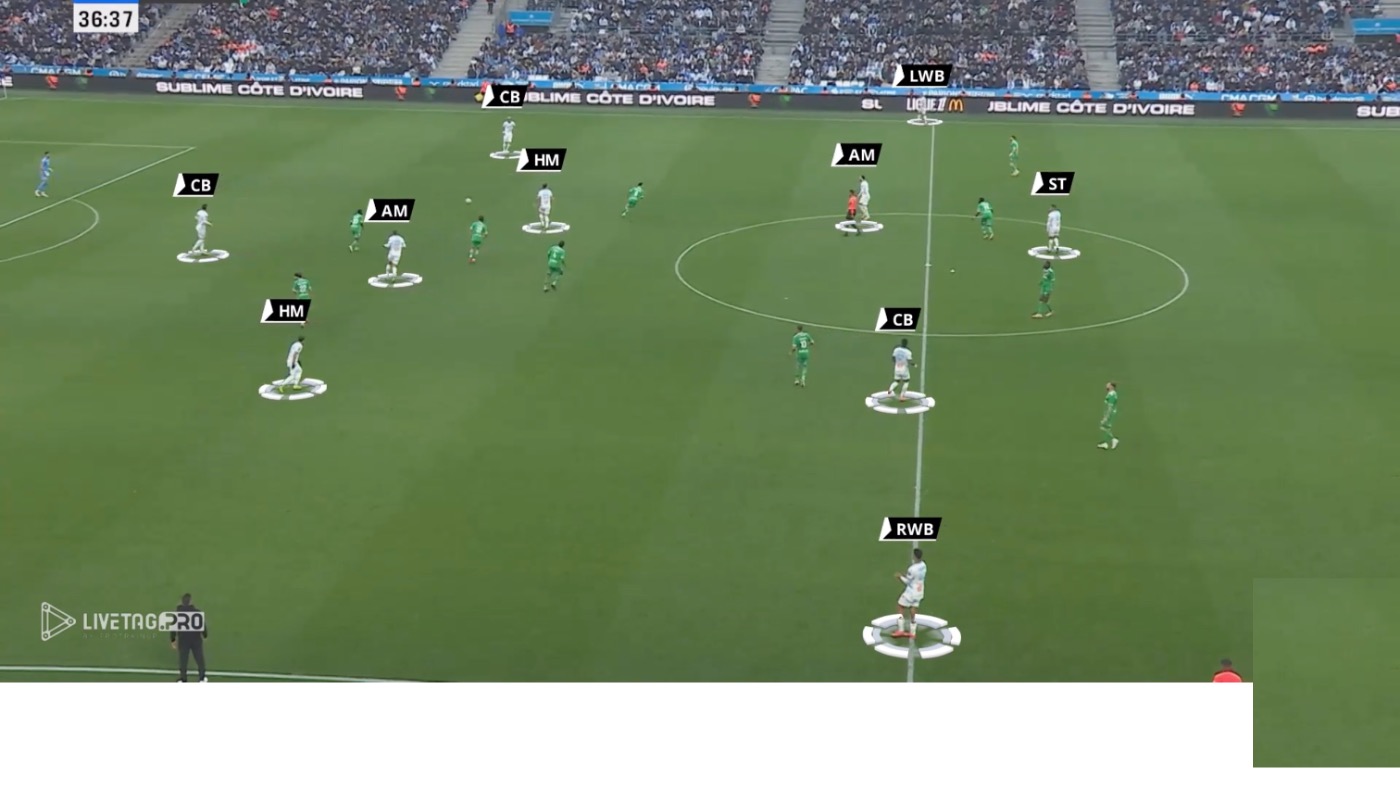
Introduction
Roberto De Zerbi has been one of the most influencial coaches in the past years when it comes to build-up and attacking approach. Under the Italian coach’s leadership, Olympique de Marseille has undergone a significant tactical transformation in the 2024/25 season, focusing on meticulous offensive build-up play and strategic occupation of spaces. In this article, we outline some key aspects of their tactical approach.
Building from the Back: 3-2 Structure with and without the Goalkeeper
At Marseille, Roberto De Zerbi operates from a base 3-4-3 system, featuring a line of three center-backs, two wing-backs, two players in the base of the midfield, two advanced midfielders, and one forward. During the build-up phase, this structure shifts into a 3-2, with three defenders (the center-backs) and two midfielders ahead of them, creating a platform to attract the opponent and progress up the pitch.
When the goalkeeper (Rulli) is involved, he integrates as a fourth man in the build-up, allowing greater width and depth in circulation. This can form an almost diamond-shaped structure with Rulli at the base, enabling the team to attract high pressing and free up the spare man. In situations of intense pressure, Rulli positions himself as a third center-back, forming a back three alongside two center-backs, with the third center-back providing additional width.
Without the goalkeeper’s involvement, the 3-2 structure remains with the center-backs spread wide and the midfielders staggered, but the center-backs take on greater responsibility to drive forward or play penetrating passes. The wing-backs, coming from the 3-4-3, may either remain wide or step higher depending on the opponent’s positioning.

Olympique de Marseille under Roberto De Zerbi. Build-up I.
When building up from the goal kick, the goalkeeper becomes the third center-back, forming a 3-2 structure. The side center-back provides width, and one advanced midfielder drops back to create numerical superiority.
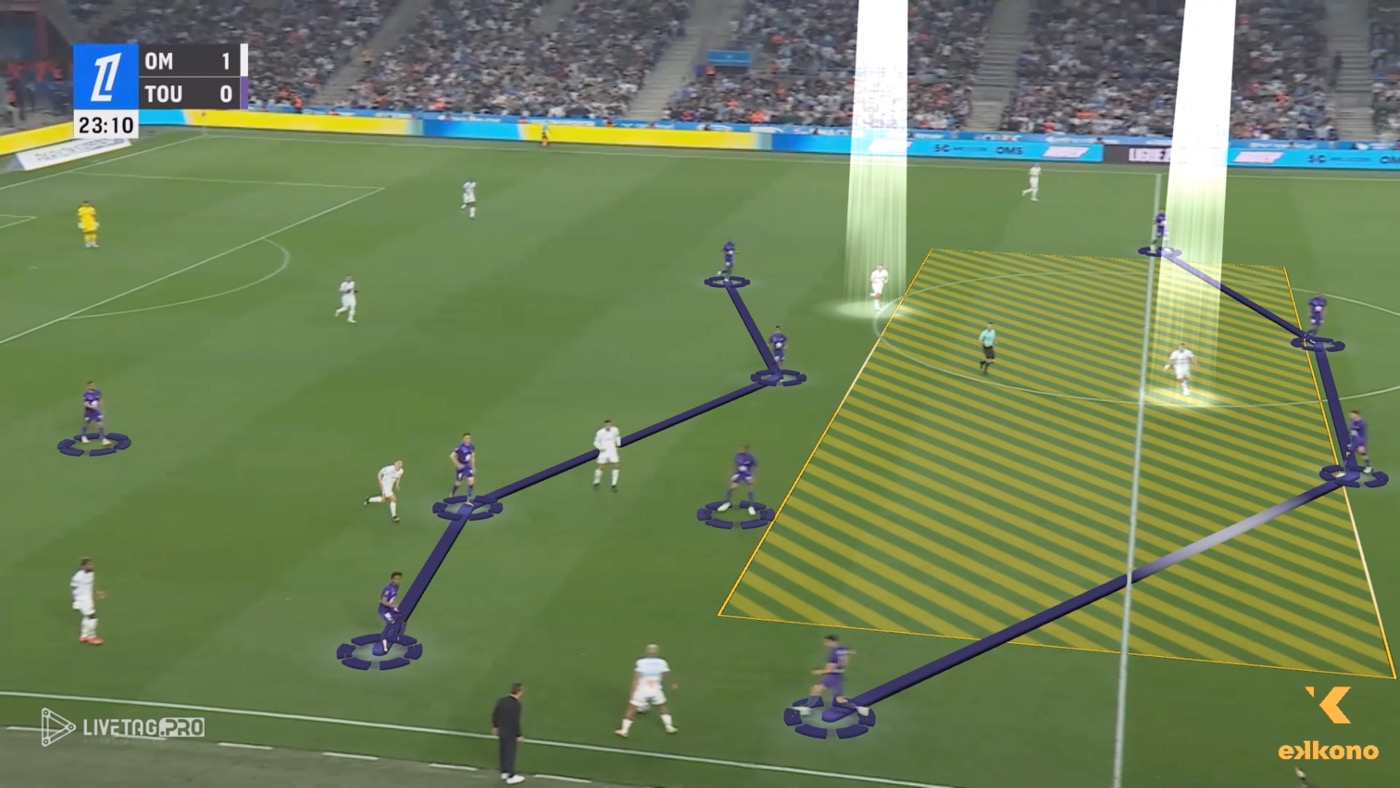
Olympique de Marseille under Roberto De Zerbi. Build-up II.
By using this structure and dropping some additional players, it creates a big gap between the defensive and midfield lines, which Marseille players take advantage of to receive with space and time to progress.
Fluid Attacking Rotations and Positional Play in the Central Zone
Within this system, an interior square is created involving the two center-backs closest to the center, the two midfielders from the double pivot, and occasionally one attacking midfielder dropping deeper to create numerical superiority. This square shape is highly fluid.
Center-backs are encouraged to carry the ball forward to break lines, holding midfielders can drop between the center-backs to form the back three when wing-backs push higher, and attacking midfielders drop into midfield spaces to either receive the ball between lines or rotate positions with the holding midfielder to disrupt opponents’ marking. This continuous rotation generates confusion in the opponent’s pressing structure, ensuring a free player is always available to progress the ball.
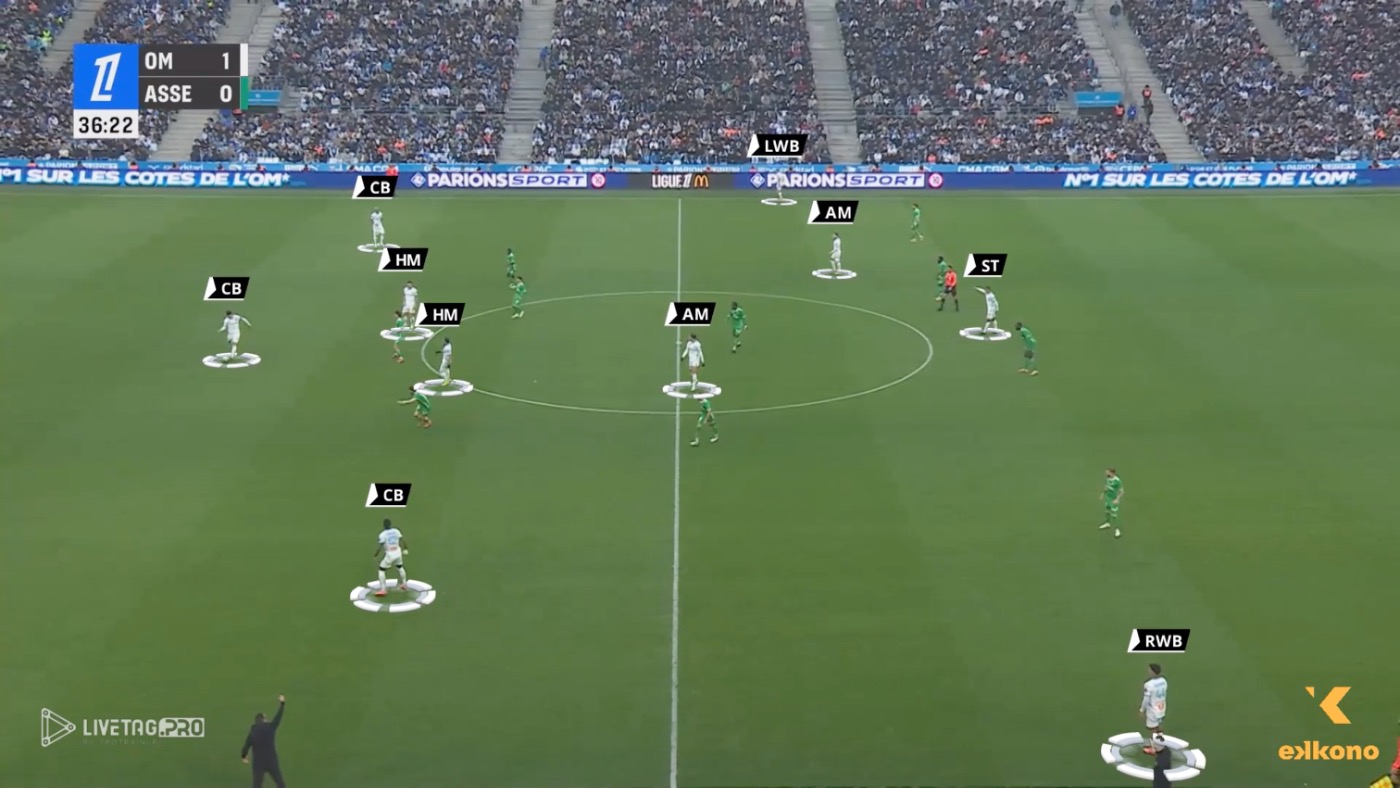
Olympique de Marseille under Roberto De Zerbi. Fluidity in the Central Square I.
In this example, we can see how Marseille players position themselves initially. All players are in their usual positions.
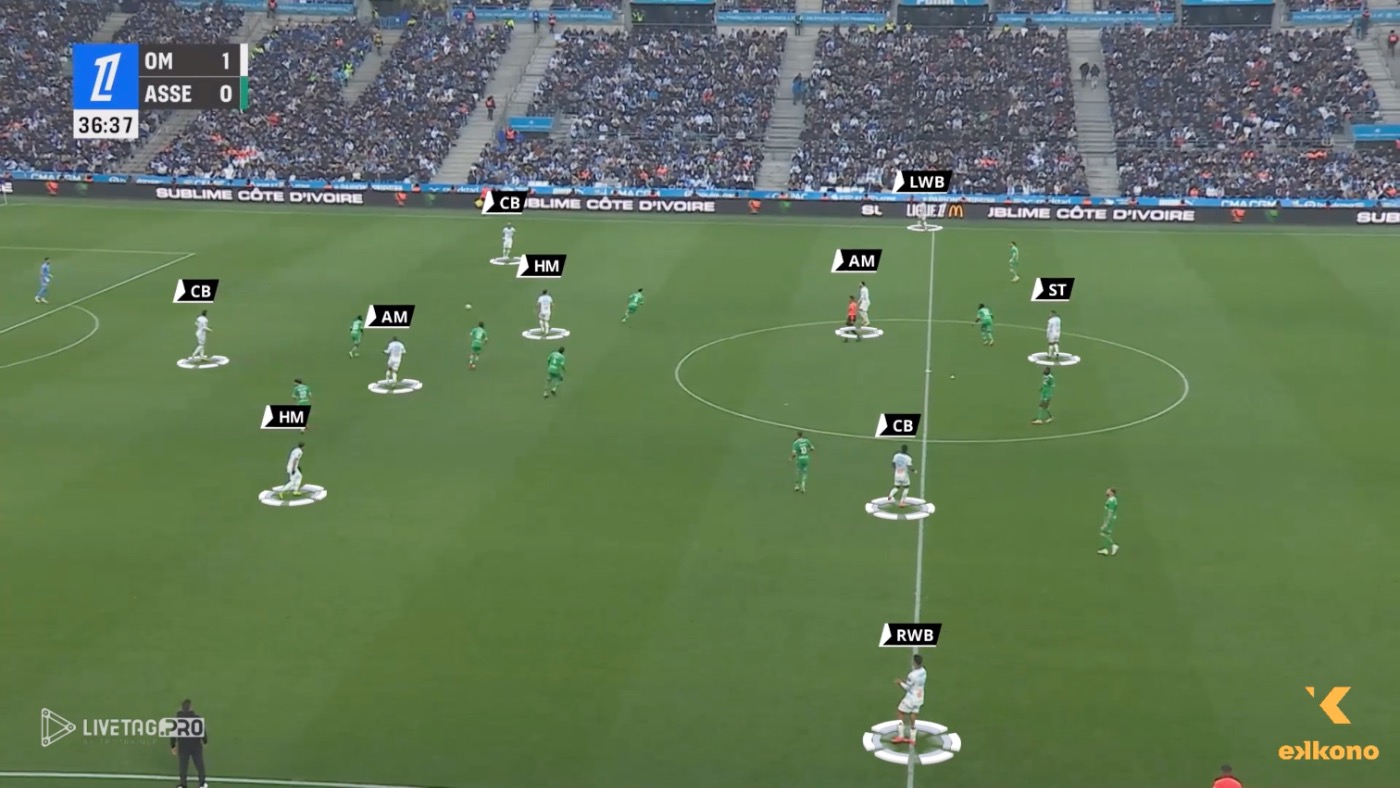
Olympique de Marseille under Roberto De Zerbi. Fluidity in the Central Square I.
During the attack, a rotation of positions occurs. The holding midfielder takes the place of the center-back, the center-back moves into the position of the advanced midfielder, and the advanced midfielder drops into the holding midfielder’s role.
Using the Third-Man Concept to Break Pressures and Circulate Possession
Building on this flexible structure, Marseille constantly uses third-player (or third-man) patterns as a mechanism to overcome high or mid-block pressures, create clean progressions into intermediate zones, and shift play towards advantageous areas. Typical examples include sequences such as center-back to holding midfielder to attacking midfielder breaking the line, wing-back to midfielder to advanced midfielder who is attacking space, or midfielder to striker who lays off the ball for a third arriving player.
Even goalkeepers are involved, with patterns like goalkeeper to holding midfielder to center-back. This pattern—pass, fix, lay-off, and progression—is a constant in De Zerbi’s model, used to animate the attack while maintaining control of possession.
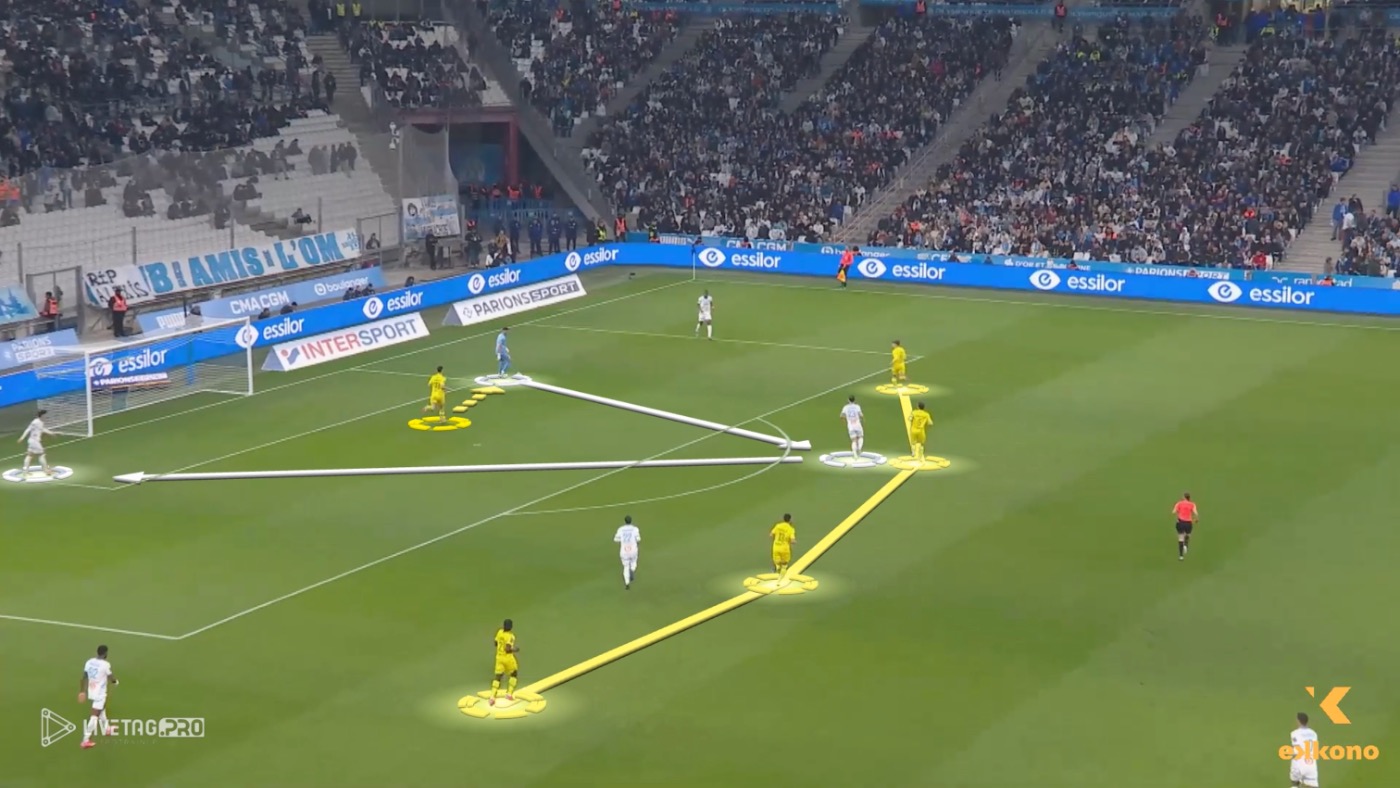
Olympique de Marseille under Roberto De Zerbi. Third-Player Concept I.
When building up from the goal kick, using third-man concepts helps to bypass the striker’s pressure.
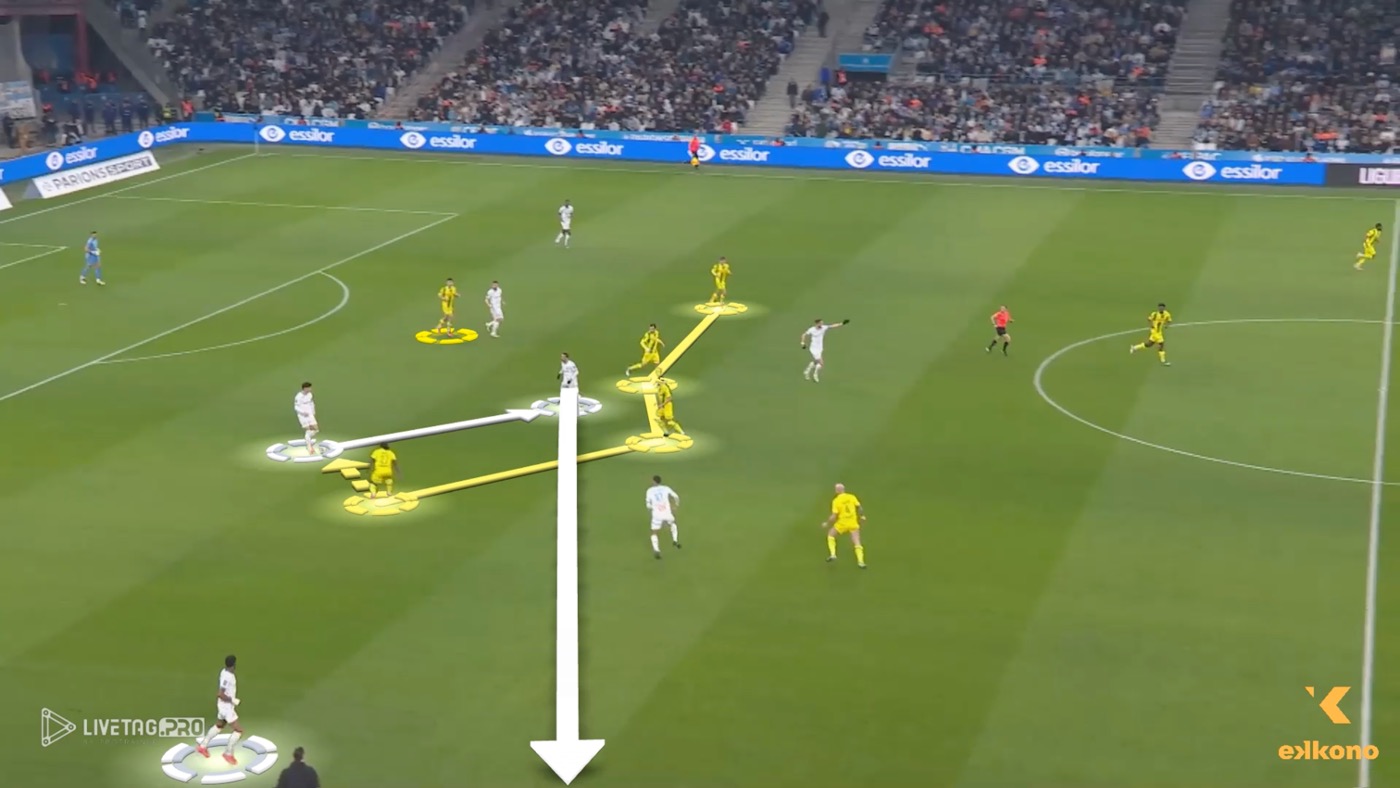
Olympique de Marseille under Roberto De Zerbi. Third-Player Concept II.
Using the same concept also helps to surpass the midfield line.
Exploiting the Gap between Full-Back and Center-Back Against Mid and Low Blocks
In the final third, Marseille continues from their 3-4-3 structure but introduces high levels of positional mobility. Wing-backs maintain width, while advanced midfielders, the striker, or even center-backs make aggressive movements to attack the channels between the opponent’s center-back and full-back, especially against teams defending in mid-blocks or low blocks. Key mechanisms include drawing the central defenders by slow possession to stretch the opposing block, synchronized runs from advanced midfielders (such as Greenwood) into the spaces between center-back and full-back, and well-timed through passes from the midfielders or advancing center-backs.
In areas with low defensive density, Marseille also seeks 2v1 situations on the flanks to attract defenders, break through, and attack the gaps created with decisive runs behind the defensive line.
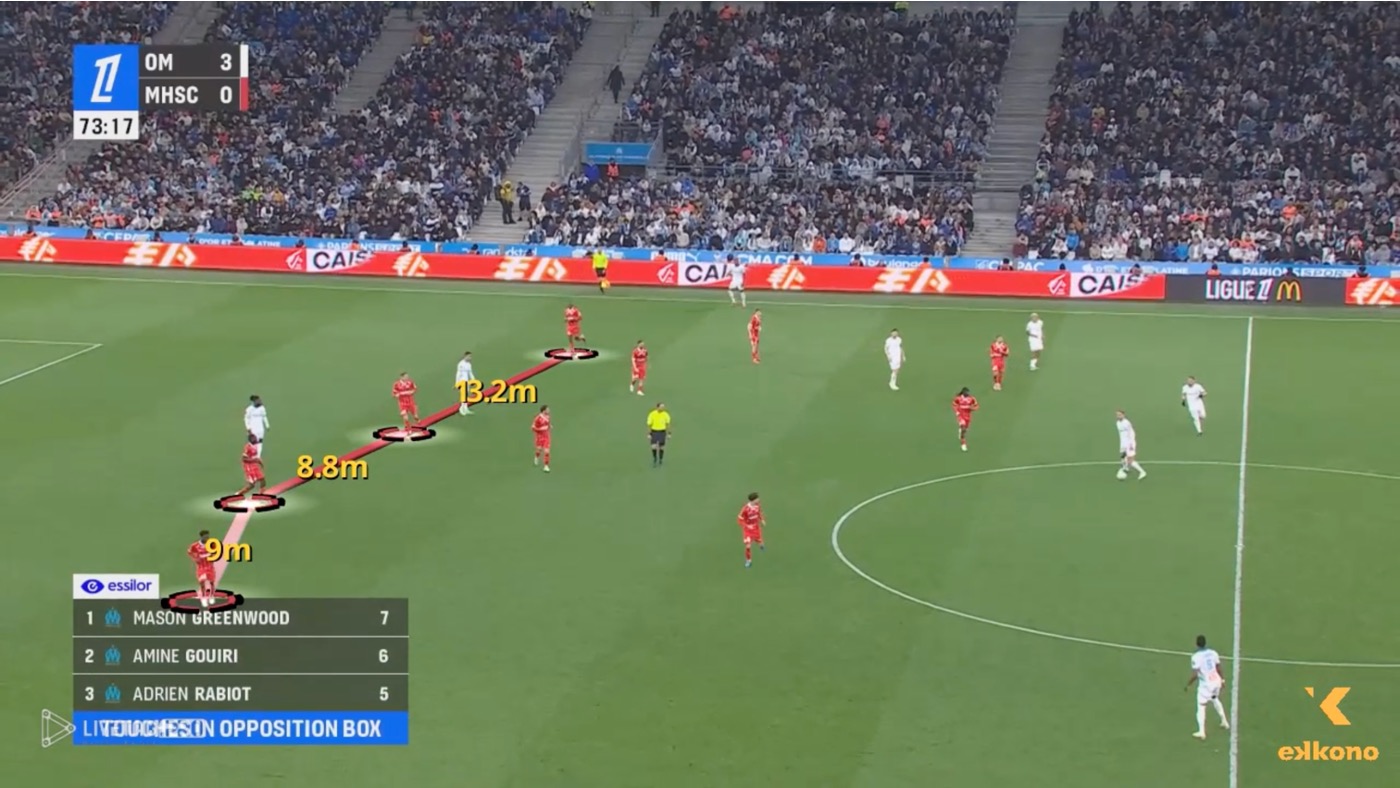
Olympique de Marseille under Roberto De Zerbi. Attack the CB-FB gap I.
In this example, we can see how De Zerbi’s team switches the ball orientation to stretch the opponent’s defensive line.
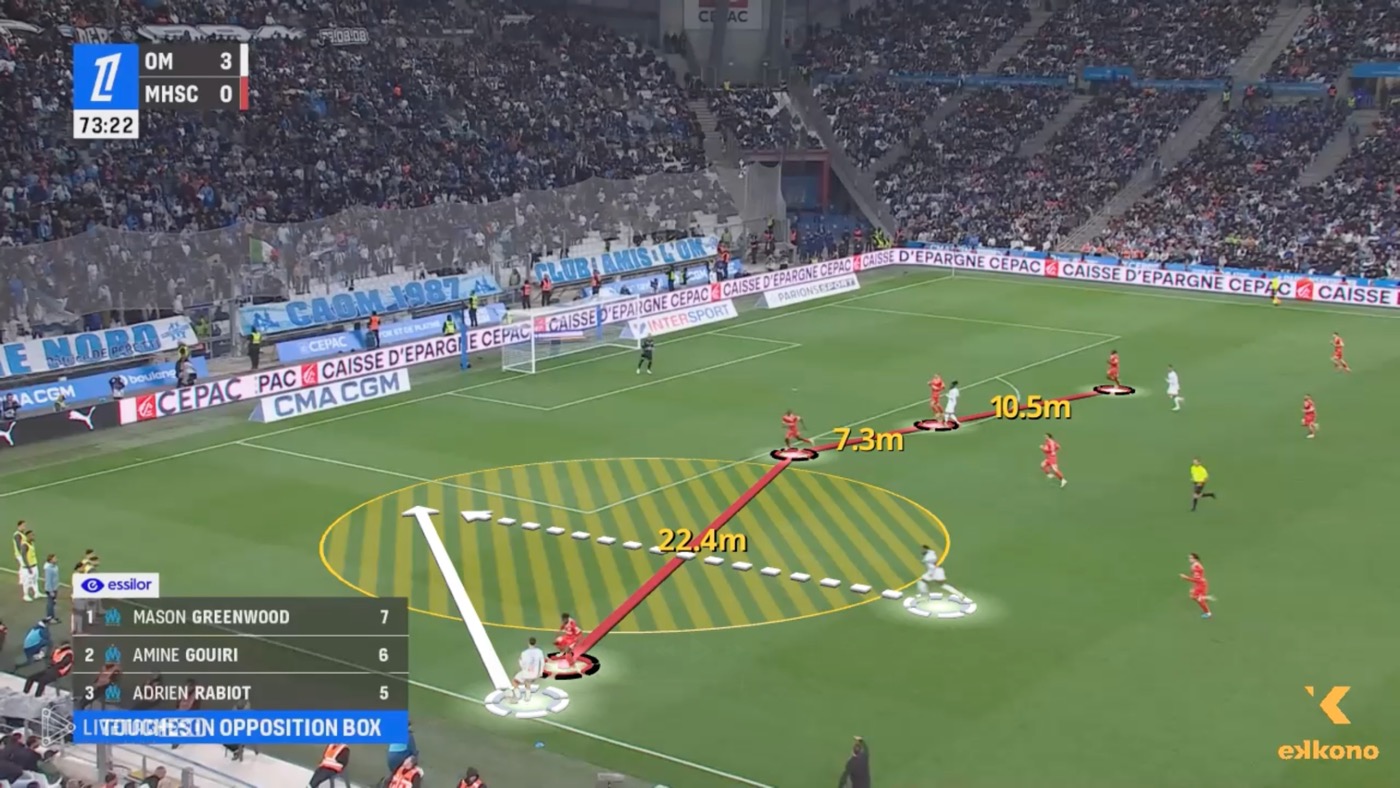
Olympique de Marseille under Roberto De Zerbi. Attack the CB-FB gap II.
As soon as a gap forms between the center-back and the full-back, a Marseille player attacks that space.
Conclusion
Without a doubt, under Roberto De Zerbi’s guidance, Olympique de Marseille has become a team with a distinct identity—marked by fluid positional play, intelligent occupation of space, and a sophisticated build-up phase. His tactical approach has elevated Marseille’s collective understanding, placing great emphasis on control, progression, and coordinated movements. The evolution seen this season reflects a clear commitment to his footballing principles and has positioned Marseille as one of the most tactically refined sides in Ligue 1.
Remember you can watch the full analysis in video inside our virtual campus. Not a member? Check our membership plans and sign up now.

